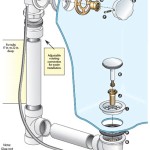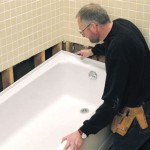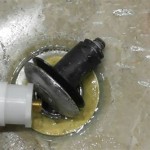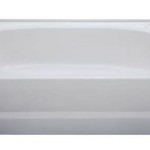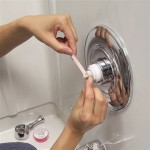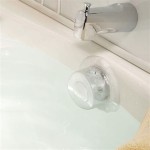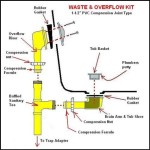Bathtub Drain Lever Not Working: Troubleshooting and Solutions
A malfunctioning bathtub drain lever is a common household issue. It can manifest in various ways, including the inability to seal the drain, difficulty in opening the drain, or a lever that simply moves without activating the drain mechanism. Understanding the potential causes and troubleshooting steps can often resolve the problem without the need for professional plumbing assistance. This article will explore the common reasons behind a non-functional bathtub drain lever and provide detailed instructions on how to diagnose and rectify the situation.
Bathtub drain mechanisms are designed to create a watertight seal to allow for filling the tub and to release the water effectively when the bath is finished. These systems are relatively simple in design but can become unreliable due to factors such as corrosion, hair accumulation, and general wear and tear. Identifying the specific cause of the malfunction is the first step in implementing an effective solution.
Identifying the Problem: Common Causes
Several factors can contribute to a bathtub drain lever failing to function correctly. A thorough examination of the drain components is essential for accurate diagnosis. The most common culprits include:
Loose or Broken Linkage: The linkage is the series of rods and connectors that transmit the motion of the lever to the stopper mechanism inside the drainpipe. Over time, these components can become loose, bent, or even completely broken. This disconnects the lever from the stopper, preventing it from properly sealing or opening the drain.
Corrosion and Mineral Buildup: The drain mechanism is constantly exposed to water and soap, which can lead to corrosion and the accumulation of mineral deposits. This buildup can impede the movement of the various components, causing the stopper to stick in either the open or closed position. Corrosion can also weaken the metal parts, leading to breakage.
Hair and Debris Obstruction: Hair is a notorious enemy of bathtub drains. It tends to accumulate around the stopper and linkage, creating a tangled mass that restricts movement and prevents the stopper from fully sealing the drain. Soap scum and sediment can also contribute to this problem.
Stopper Malfunction: The stopper itself, whether it's a pop-up, trip lever, or a simple rubber stopper, can be the source of the problem. Pop-up stoppers can become misaligned or damaged, preventing them from seating properly. Trip lever stoppers can have worn-out rubber seals or a damaged pivot mechanism. Even a simple rubber stopper can become worn, cracked, or misshapen, leading to a poor seal.
Troubleshooting Steps: A Step-by-Step Guide
Before attempting any repairs, it is crucial to gather the necessary tools and materials. These may include a screwdriver (both Phillips and flathead), pliers, a wrench, a flashlight, penetrating oil, a wire coat hanger, and potentially replacement parts such as a new stopper or linkage.
1. Inspect the Overflow Plate: The overflow plate is the small, usually round, plate located near the top of the bathtub. Remove the screws holding the plate in place. Behind the plate, one will find the linkage that connects to the drain stopper. Examine the linkage for any signs of looseness, bending, or breakage. Tighten any loose screws or connections with pliers. If the linkage is bent, attempt to straighten it carefully with pliers. If any parts are broken, replacement is necessary. Replacement parts can typically be found at most hardware stores.
2. Adjust the Linkage: Many bathtub drain systems have an adjustment mechanism on the linkage. This allows for fine-tuning the position of the stopper. Refer to the manufacturer's instructions for the specific adjustment procedure for the bathtub model. The adjustment mechanism often involves a screw or a series of notches on the linkage rod. Experiment with different settings to find the position that allows the stopper to fully seal the drain when the lever is in the closed position and to fully open the drain when the lever is in the open position.
3. Remove and Clean the Stopper: The type of stopper will determine the method for removal. For a pop-up stopper, there's usually a pivot rod connected to the linkage. Disconnect the pivot rod and then gently pull the stopper out of the drain. For a trip lever stopper, it may be necessary to remove the overflow plate and linkage to access the stopper. Once the stopper is removed, thoroughly clean it with a brush and mild detergent to remove any hair, soap scum, or mineral deposits. Inspect the stopper for any signs of damage, such as cracks or worn rubber seals. If the stopper is damaged, replacement is recommended.
4. Clear the Drainpipe: Even if the stopper is clean, there may be a clog further down the drainpipe. Use a wire coat hanger or a specialized drain snake to clear any obstructions. Insert the tool into the drainpipe and carefully probe for any clogs. Once a clog is encountered, try to break it up or pull it out. Be careful not to force the tool, as this could damage the drainpipe. After clearing any obstructions, flush the drain with hot water to remove any remaining debris.
5. Lubricate the Mechanism: After cleaning and adjusting the drain mechanism, apply a small amount of penetrating oil to the moving parts. This will help to prevent corrosion and ensure smooth operation. Focus on the linkage, pivot points, and the stopper itself. Avoid using excessive amounts of oil, as this can attract dirt and debris.
6. Reassemble and Test: After completing the above steps, reassemble the drain mechanism and test its function. Make sure the stopper seals the drain completely when the lever is in the closed position and that the drain opens fully when the lever is in the open position. If the problem persists, repeat the troubleshooting steps or consider replacing the entire drain assembly.
Specific Stopper Types and Their Problems
The bathtub drain system includes different types of stoppers, each with its own common failure points. Understanding these differences can aid in more targeted troubleshooting.
Pop-Up Stoppers: These stoppers operate by a simple pivoting mechanism. Common problems include misalignment, where the stopper doesn't seat properly, and pivot arm breakage. Mineral buildup can also seize the pivoting mechanism, preventing the stopper from moving freely. Cleaning and lubrication are often effective remedies. Replacement of the stopper or pivot arm may be necessary if there's physical damage.
Trip Lever Stoppers: Trip lever stoppers are connected to the overflow plate lever. The lever pulls a rod which lifts or lowers the stopper. Problems often arise with the linkage becoming disconnected, bent, or corroded. The rubber seal at the bottom of the stopper can also wear out or become damaged, preventing a proper seal. Adjusting the linkage or replacing the stopper and seal are common solutions. The pivot point where the linkage and stopper connect can also become clogged with hair and debris.
Lift-and-Turn Stoppers: These stoppers are manually operated by lifting and turning the stopper itself. The turning action engages or disengages a rubber seal at the bottom of the stopper. The seals can wear out, or the turning mechanism can become stripped, preventing it from functioning properly. Replacement of the stopper is usually the best solution.
Toe-Touch Stoppers: Toe-touch stoppers work by pressing down on the stopper with toe. Pressing once seals the drain, pressing again releases it. The internal mechanism can become damaged, preventing it from locking into either the open or closed position. Furthermore, hair and debris can become lodged within the stopper. Cleaning and, if necessary, replacing the stopper is typically required.
Rubber Stoppers: A basic rubber stopper is inserted manually into the drain opening. While simple, these stoppers can become misshapen, cracked, or simply worn out, leading to a poor seal. Replacement with a new rubber stopper is the straightforward solution.
By following these troubleshooting steps and understanding the specific issues associated with different stopper types, many bathtub drain lever problems can be resolved without calling a plumber. However, if the problem persists or if there is uncertainty about any aspect of the repair, it is best to consult with a qualified plumbing professional.

Bathtub How Can I Remove A Stuck Bath Stopper Assembly Home Improvement Stack Exchange

How To Fix A Trip Lever Bathtub Drain Stopper Hofen

How To Fix A Trip Lever Bathtub Drain Stopper Hofen

How To Replace Bathtub Drain Stopper With A Lift And Turn Diy

Bath Tub Trip Lever Stopper Replacement Or Adjustment Easy Fix

How To Adjust Bath Tub Drain Trip Lever

Plumbing How To Disassemble A Pop Up Trip Lever Drain In Tub Home Improvement Stack Exchange

That Your Tub Doesn T Hold Water 2 Trip Lever Fixes

Bath Tub Trip Lever Stopper Replacement Or Adjustnment

How Do You Clean A Trip Lever Drain 3 Steps Done 1 Tom Plumber

